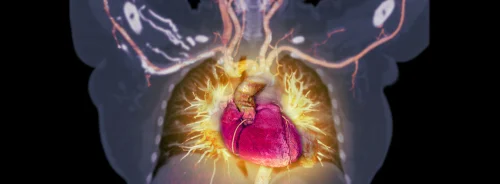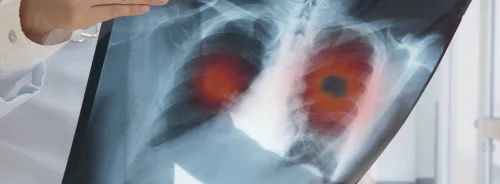MRI Interventions, Inc.'s ClearPoint® Neuro Intervention System is now being used in connection with laser ablation therapy. The ClearPoint system provides guidance for the placement and operation of instruments or devices during the planning and operation of neurological procedures in the MRI environment, making it an ideal delivery platform to place laser probes to precisely targeted areas in the brain.
Using the ClearPoint system to deliver laser ablation therapy, the surgeon sees and selects the desired neurological target, aims the ClearPoint SmartFrame® targeting device, and watches under real-time MRI guidance as the laser probe is advanced through the SmartFrame device to the target. Energy is then delivered to the target area through the laser probe, and that energy destroys the unwanted tissue. Because the procedure is performed in the MRI environment, the surgeon is able to monitor brain tissue temperature throughout the procedure, and to verify that the targeted tissue has been destroyed.
Dr. Hooman Azmi at Hackensack University Medical Center was the first surgeon to couple the ClearPoint system with laser ablation technology in connection with the treatment of malignant brain tumors called glioblastoma multiforme (GBM). Dr. Robert Gross at Emory University Hospital was the first to use the ClearPoint system and laser ablation technology to treat patients with epilepsy. Both Drs. Azmi and Gross originally had brought the ClearPoint system into their hospitals to assist with the placement of deep brain stimulation (DBS) electrodes.
"The combination of these two technologies – the ClearPoint MRI-guided system and laser ablation – has the potential to provide minimally-invasive treatment options for patients whose epileptic seizures cannot be controlled with medications," said Dr. Gross.
Though the diseases are different, for many patients with GBM and certain forms of epilepsy the main treatment option is surgical resection, or removal, of the affected area in the brain. This is usually a highly invasive procedure that requires surgeons to detach a large portion of the patient's skull in order to access the target location. For most people with GBM, surgical resection is the best option for increasing chances of survival, but not infrequently, the tumour is in an area which makes open surgery with limited visualisation risky. Some patients with epilepsy or brain tumour also do not make good candidates for conventional surgical resection due to the highly invasive nature of the traditional procedure.
"ClearPoint allows me to surgically treat patients I would not be able to treat using other platform systems," stated Dr. Azmi. "It allows me to visualise the tumour and healthy brain tissue while I am working without putting my patient through a highly invasive procedure. Using ClearPoint, I can ensure clean margins while avoiding damage to the rest of the brain."
"We are excited about both current and future applications for our ClearPoint platform," said Kimble Jenkins, CEO of MRI Interventions. "Our vision is that the ClearPoint system will remain at the forefront of minimally invasive neurosurgery enabling more options for more patients suffering from neurological disorders."
The ClearPoint system is intended to be used as an integral part of procedures, such as biopsies and catheter and electrode insertions, which have traditionally been performed using stereotactic methods, and it is designed to allow those procedures to be performed in a hospital's existing MRI suite. The laser probe used by physicians in the laser ablation procedure is manufactured and sold by a third party medical device company.
Latest Articles
Brain, MRI, Tumours, Epilepsy
MRI Interventions, Inc.'s ClearPoint® Neuro Intervention System is now being used in connection with laser ablation therapy. The ClearPoint system provide...









